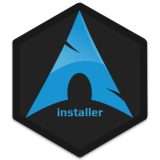Se analisti e investitori volevano una discontinuità, beh, ora l’hanno avuta: Satya Nadella, investito dallo scorso febbraio della carica di CEO di Microsoft, ha impresso una brusca virata alla rotta che appena un anno fa il suo predecessore Steve Ballmer aveva impartito alla nave di Redmond . Nadella si gioca il tutto per tutto: consapevole, almeno stando alle parole contenute in una lettera aperta (ma scritta per i dipendenti ) e dalle dichiarazioni rilasciate a The Verge , che il mercato e il mondo in cui la sua azienda si muove stanno cambiando. Per questo non possono più valere le ricette di 30 anni fa, o anche solo quelle che nei primi anni 2000 hanno fatto macinare utili a Big M.
 La lettera di Nadella si divide in tre tronconi: in un certo senso il CEO ha voluto chiarire innanzi tutto quali sono le acque (agitate) in cui sta navigando la sua Microsoft, per poi procedere a spiegare quali saranno i filoni che intende promuovere e coltivare nel futuro, e infine quali i cambiamenti che per questo l’intera azienda dovrò affrontare per farvi fronte. La parola d’ordine, che più volte Nadella ha ripetuto sin dal suo esordio, è “mobile-first, cloud-first”: in altre parole Nadella prende atto che la visione di “un PC Windows su ogni scrivania” è definitivamente tramontata sotto i colpi del rinnovamento dei device, dei form-factor, delle abitudini dei consumatori. I PC non sono il futuro, sono il presente: la spinta di milioni, prossimamente miliardi, di utenti che hanno abbracciato il paradigma della mobilità totale non va sottovalutata . E questo significa anche abbandonare le certezze delle scatole di Windows e Office sugli scaffali, e abbracciare nuovi modelli di business. Il lock-in non è più un sentiero praticabile, difficile pensare che chiunque oggi possa sperare di ottenere qualcosa di simile con la pluralità e la ricchezza dell’offerta in circolazione. Per vincere Microsoft non deve per forza dominare le classifiche di market-share (anche se non guasta mai): basterà riuscire a piazzare i propri servizi e prodotti su tutti gli schermi presenti in casa, in ufficio, in mobilità.
La lettera di Nadella si divide in tre tronconi: in un certo senso il CEO ha voluto chiarire innanzi tutto quali sono le acque (agitate) in cui sta navigando la sua Microsoft, per poi procedere a spiegare quali saranno i filoni che intende promuovere e coltivare nel futuro, e infine quali i cambiamenti che per questo l’intera azienda dovrò affrontare per farvi fronte. La parola d’ordine, che più volte Nadella ha ripetuto sin dal suo esordio, è “mobile-first, cloud-first”: in altre parole Nadella prende atto che la visione di “un PC Windows su ogni scrivania” è definitivamente tramontata sotto i colpi del rinnovamento dei device, dei form-factor, delle abitudini dei consumatori. I PC non sono il futuro, sono il presente: la spinta di milioni, prossimamente miliardi, di utenti che hanno abbracciato il paradigma della mobilità totale non va sottovalutata . E questo significa anche abbandonare le certezze delle scatole di Windows e Office sugli scaffali, e abbracciare nuovi modelli di business. Il lock-in non è più un sentiero praticabile, difficile pensare che chiunque oggi possa sperare di ottenere qualcosa di simile con la pluralità e la ricchezza dell’offerta in circolazione. Per vincere Microsoft non deve per forza dominare le classifiche di market-share (anche se non guasta mai): basterà riuscire a piazzare i propri servizi e prodotti su tutti gli schermi presenti in casa, in ufficio, in mobilità.
I dati, la loro pervasività e onnipresenza, sono l’ossessione di Nadella: l’afflusso continuo e sempre più ampio di informazioni provenienti da sensori, smartphone, tablet, webcam e ogni genere di dispositivo della Internet delle cose crea un autentico oceano di dati da gestire, a cui dare un senso e da mostrare in modo comprensibile ai consumatori. Una sfida che si combatte su diversi fronti: sul piccolo, l’utente singolo, sul medio, quando c’è di mezzo una impresa, fino al grande e l’enorme quando si passa alle città, o alle multinazionali. Dare senso a tutti questi dati senza l’aiuto dell’informatica richiederebbe tempo: una “risorsa scarsa” a giudizio di Nadella , che dunque punta proprio su questa suggestione per indicare la strada ai suoi dipendenti che dovranno sviluppare prodotti e servizi in funzione di questo scopo. Semplificare la vita all’utente, garantirne la produttività , mettersi nei suoi panni e sviluppare quanto gli occorre davvero e non quanto sarà (solo) più remunerativo.
C’è una frase che racchiude i valori fondanti della Microsoft di Nadella: “Digital Work & Life Experiences”, ovvero un universo nel quale la tecnologia e l’informatica gradualmente tendono a sparire dall’orizzonte visivo degli utenti, a cui non interessa più quale sistema operativo o quale suite office installare , bensì come riuscire a fruire al meglio delle proprie informazioni personali e professionali senza troppa distinzione tra i due ambiti (o, per meglio dire, con un confine che si fa sempre più vago). Per questo il CEO cita alcune tecnologie a suo giudizio esemplificative: Cortana, l’assistente personale su Windows Phone; Skype Translator, il plugin per la traduzione simultanea in videoconferenza; Delve (già Oslo ), uno strumento machine-learning che da solo individua il metodo migliore per presentare i dati raccolti; e la lista potrebbe continuare, tutta fatta di idee che aggiungono attivamente qualcosa alla vita quotidiana, più che limitarsi ad attendere le istruzioni dell’utente. Va da sé che oggi tutte queste tecnologie hanno dei limiti, che andranno superati per renderle davvero efficaci.
Il concetto base è tutto qui : la tecnologia, come è ovvio, deve semplificare e non complicare la vita ai suoi utilizzatori , e dunque lo sviluppo di nuovi prodotti a Redmond deve tenere conto delle esigenze delle persone e non (solo) quelle del business aziendale. Per fare tutto questo Microsoft ha senz’altro bisogno di una divisione hardware attraverso cui dare corpo a certe visioni e spingere il mercato in determinate direzioni, motivo per il quale è stata acquisita Nokia che continuerà a produrre smartphone (anche se par di capire con un approccio più simile alla linea Nexus di Google). E non bisogna neppure trascurare l’importanza di elementi quali Surface o Xbox : quest’ultima voce è vista come l’esempio lampante di quanto Microsoft sia affezionata all’idea di rimanere in contatto diretto col il mercato consumer, ad avere un marchio di successo presso il grande pubblico e quindi investire per mantenere tale popolarità.
Per fare tutto questo, Nadella pensa di essere già adeguatamente attrezzato: ha Azure, il cloud computing di casa, ha Windows Server e Windows per tenere gli avamposti sia in territorio enterprise sia sulle scrivanie degli uffici che su quelle personali. Tutto insieme il cosiddetto cloud OS di Microsoft dovrebbe riuscire a sostenere un ecosistema di servizi: che però si allargheranno anche ai dispositivi e sistemi operativi altrui, soprattutto come quando nel caso del mobile il successo di iOS e soprattutto Android impone di tenere in considerazione dove sono effettivamente i consumatori, e dunque dove i servizi creati (da Office fino a quelli più evoluti e specializzati) possono essere realmente venduti. I primi passi in tal senso si sono già concretizzati: Office per iPad è stato finalmente lanciato a marzo e non è più semplicemente un visualizzatore di documenti, per quanto riguarda Android dovrebbe essere una questione di poche settimane prima di vedere altrettanto.
Tutto questo, però, non potrà avvenire senza un cambiamento: anche organizzativo . Nel mese di luglio Nadella promette che ai dipendenti saranno fornite molte indicazioni su quello che li aspetta : il loro futuro pare fatto di cambiamenti sotto il piano della valutazione del lavoro svolto, con un’attenzione spasmodica all’analisi dei dati di rendimento delle soluzioni adottate e all’ingegneria di processo, e con una maggiore disponibilità alla mobilità interna. In altre parole, il CEO chiederà un’efficientamento interno abbinato a una maggiore collaborazione tra le diverse parti dell’azienda : va da sé che chi non riuscisse a tenere il passo o, peggio, si rifiutasse di seguire la nuova rotta, non avrà un futuro assicurato a Redmond. Nadella non esclude assunzioni o acquisizioni, ma è ovvio che ci sarà molto da fare: non foss’altro per tenere conto delle 25mila teste arrivate in dote con Nokia, e che avranno prodotto una certa sovrabbondanza in certi comparti come il marketing, le vendite, o lo sviluppo software.
Provando a riassumere la lunga lettera di Nadella, il messaggio che filtra è uno soltanto: la Microsoft di Windows e Office non c’è più , e tanti saluti anche all’idea di seguire Apple sulla strada dell’integrazione hardware-software che Ballmer propugnava. La Microsoft di Nadella prova a battere una via di mezzo tra Cupertino e Mountain View: alcuni dispositivi chiave per tenere testa all’offerta altrui, e dunque creare spazio al proprio ecosistema, ma soprattutto una forte spinta alla creazione di prodotti che abbiano un valore evidente per i consumatori. Nadella sembra insomma aver capito l’aria che tira: di licenze Windows non si potrà vivere in eterno, e il ritardo accumulato nel comprenderlo produrrà senz’altro scorie che andranno smaltite. Come, quanto bene e quanto in fretta dipenderà dalla sua capacità di motivare e indirizzare le sue truppe: la trimestrale in arrivo questo mese è ovviamente troppo presto per giudicare, ma se in autunno ci sarà come pare un forte rinnovamento dell’offerta tra 12 mesi si potrebbero iniziare a tirare le prime somme del suo operato.
Luca Annunziata Bold Ambition & Our Core
From: Satya Nadella
To: All Employees
Date: July 10, 2014 at 6:00 a.m. PT
Subject: Starting FY15 – Bold Ambition & Our Core
Team,
As we start FY15, I want to thank you for all of your contributions this past year. Ìm proud of what we collectively achieved even as we drove significant changes in our business and organization. It’s energizing to feel the momentum and enthusiasm building.
The day I took on my new role I said that our industry does not respect tradition – it only respects innovation. I also said that in order to accelerate our innovation, we must rediscover our soul – our unique core. We must all understand and embrace what only Microsoft can contribute to the world and how we can once again change the world. I consider the job before us to be bolder and more ambitious than anything we have ever done.
Wèll use the month of July to have a dialogue about this bold ambition and our core focus. Today I want to synthesize the strategic direction and massive opportunity Ìve been discussing for the past few months and the fundamental cultural changes required to deliver on it. On July 22, wèll announce our earnings results for the past quarter and Ìll say more then on what we are doing in FY15 to focus on our core. Over the course of July, the Senior Leadership Team and I will share more on the engineering and organization changes we believe are needed. Then, at MGX and //oneweek, wèll come together to build on all of this, learn from each other and put our ideas into action.
Our Worldview
We live in a mobile-first and cloud-first world. Computing is ubiquitous and experiences span devices and exhibit ambient intelligence. Billions of sensors, screens and devices – in conference rooms, living rooms, cities, cars, phones, PCs – are forming a vast network and streams of data that simply disappear into the background of our lives. This computing power will digitize nearly everything around us and will derive insights from all of the data being generated by interactions among people and between people and machines. We are moving from a world where computing power was scarce to a place where it now is almost limitless, and where the true scarce commodity is increasingly human attention.
In this new world, there will soon be more than 3 billion people with Internet-connected devices – from a farmer in a remote part of the world with a smartphone, to a professional power user with multiple devices powered by cloud service-based apps spanning work and life.
The combination of many devices and cloud services used for generating and consuming data creates a unique opportunity for us. Our customers and society expect us to maximize the value of technology while also preserving the values that are timeless. We will create more natural human-computing interfaces that empower all individuals. We will develop and deploy secure platforms and infrastructure that enable all industries. And we will strike the right balance between using data to create intelligent, personal experiences, while maintaining security and privacy. By doing all of this, we will have the broadest impact.
Our passion is to enable people to thrive in this mobile-first and cloud-first world.
Our Core
Microsoft was founded on the belief that technology creates opportunities for people and organizations to express and achieve their dreams by putting a PC on every desk and in every home.
More recently, we have described ourselves as a “devices and services” company. While the devices and services description was helpful in starting our transformation, we now need to hone in on our unique strategy.
At our core, Microsoft is the productivity and platform company for the mobile-first and cloud-first world. We will reinvent productivity to empower every person and every organization on the planet to do more and achieve more.
We think about productivity for people, teams and the business processes of entire organizations as one interconnected digital substrate. We also think about interconnected platforms for individuals, IT and developers. This comprehensive view enables us to solve the more complex, nuanced and real-world day-to-day challenges in an increasingly digital world. It also opens the door to massive growth opportunity – technology spend as a total percentage of GDP will grow with the digitization of nearly everything in life and work.
We have a rich heritage and a unique capability around building productivity experiences and platforms. We help people get stuff done. Stuff like term papers, recipes and budgets. Stuff like chatting with friends and family across the world. Stuff like painting, writing poetry and expressing ideas. Stuff like running a Formula 1 racing team or keeping an entire city running. Stuff like building a game with a spark of your imagination and remixing it with the world. And stuff like helping build a vaccine for HIV, and giving a voice to the voiceless.
This is an incredible foundation from which to grow.
At our core, Microsoft is the productivity and platform company for the mobile-first and cloud-first world. We will reinvent productivity to empower every person and every organization on the planet to do more and achieve more.
Microsoft has a unique ability to harmonize the world’s devices, apps, docs, data and social networks in digital work and life experiences so that people are at the center and are empowered to do more and achieve more with what is becoming an increasingly scarce commodity – time!
Productivity for us goes well beyond documents, spreadsheets and slides. We will reinvent productivity for people who are swimming in a growing sea of devices, apps, data and social networks. We will build the solutions that address the productivity needs of groups and entire organizations as well as individuals by putting them at the center of their computing experiences. We will shift the meaning of productivity beyond solely producing something to include empowering people with new insights. We will build tools to be more predictive, personal and helpful.
We will enable organizations to move from automated business processes to intelligent business processes. Every experience Microsoft builds will understand the rich context of an individual at work and in life to help them organize and accomplish things with ease.
Productive people and organizations are the primary drivers of individual fulfilment and economic growth and we need to do everything to make the experiences and platforms that enable this ubiquitous.
We will think of every user as a potential “dual user” – people who will use technology for their work or school and also deeply use it in their personal digital life. They strive to get stuff done with technology, demanding new cloud-powered applications, extensively using time and calendar management, advanced expression, collaboration, meeting, search and research services, all with better security and privacy control. Microsoft will push into all corners of the globe to empower every individual as a dual user – starting with the soon to be 3 billion people with Internet-connected devices. And we will do so with a platform mindset. Developers and partners will thrive by creatively extending Microsoft experiences for every individual and business on the planet.
Across Microsoft, we will obsess over reinventing productivity and platforms. We will relentlessly focus on and build great digital work and life experiences with specific focus on dual use. Our cloud OS infrastructure, device OS and first-party hardware will all build around this core focus and enable broad ecosystems. Microsoft will light up digital work and life experiences in the most personal, intelligent, open and empowering ways.
Developers and partners will thrive by creatively extending Microsoft experiences for every individual and business on the planet.
Digital Work and Life Experiences: We will deliver digital work and life experiences that are reinvented for the mobile-first and cloud-first world. First and foremost, these experiences will shine for productivity. As a result, people will meet and collaborate more easily and effectively. They will express ideas in new ways. They will experience the magic of ambient intelligence with Delve and Cortana. They will ask questions naturally and have them answered with insight from Power Q&A. They will conquer language barriers and change the world with Skype translator. Apps will be designed as dual use with the intelligence to partition data between work and life and with the respect for each person’s privacy choices. All of these apps will be explicitly engineered so anybody can find, try and then buy them in friction-free ways.
They will be built for other ecosystems so as people move from device to device, so will their content and the richness of their services – it’s one way we keep people, not devices, at the center. This transformation is well underway as we moved Office from the desktop to a service with Office 365 and our solutions from individual productivity to group productivity tools – both to the delight of our customers. Wèll push forward and evolve the world-class productivity, collaboration and business process tools people know and love today, including Skype, OneDrive, OneNote, Outlook, Word, Excel, PowerPoint, Bing and Dynamics.
Increasingly, all of these experiences will become more connected to each other, more contextual and more personal. For example, today the Cortana app on my Windows Phone merges data from highway sensors and my own calendar and simply reminds me to leave work to make it to my daughter’s recital on time. In the future, it will be even more intelligent as a personal assistant who takes notes, books meetings and understands if my question about the weather is to determine my clothes for the day or is intended to start a complex task like booking a family vacation. Microsoft experiences will be unique as they will reason over information from work and life and keep a user in control of their privacy.
Cloud OS: Our cloud OS represents the largest opportunity given we are working from a position of strength. With Azure, we are one of very few cloud vendors that runs at hyper-scale. The combination of Azure and Windows Server makes us the only company with a public, private and hybrid cloud platform that can power modern business. We will transform the return on IT investment by enabling enterprises to combine their existing datacenters and our public cloud into one cohesive infrastructure backplane. We will enable our customers to use our Cloud OS to accelerate their businesses and power all of their data and application needs.
Beyond back-end cloud infrastructure, our cloud will also enable richer employee experiences. For example, with our new Enterprise Mobility Suite, we now enable IT organizations to manage and secure the Windows, iOS and Android devices that their employees use, while keeping their companies secure. We are also making it easy for organizations to securely adopt SaaS applications (both our own and third-party apps) and seamlessly integrate them with their existing security and management infrastructure. We will continue to innovate with higher level services like identity and directory services, rich data storage and analytics services, machine learning services, media services, web and mobile backend services, developer productivity services, and many more.
Our cloud OS will also run all of Microsoft’s digital work and life experiences, and we will continue to grow our datacenter footprint globally. Every Microsoft digital work and life experience will also provide third-party extensibility and enable a rich developer ecosystem around our cloud OS. This will enable customers and partners to further customize and extend our solutions, achieving even more value.
Device OS and Hardware: Our Windows device OS and first-party hardware will set the bar for productivity experiences. Windows will deliver the most rich and consistent user experience for digital work and life scenarios on screens of all sizes – from phones, tablets and laptops to TVs and giant 82 inch PPI boards. We will invest so that Windows is the most secure, manageable and capable OS for the needs of a modern workforce and IT. Windows will create a broad developer opportunity by enabling Universal Windows Applications to run across all device targets. Windows will evolve to include new input/output methods like speech, pen and gesture and ultimately power more personal computing experiences.
Our first-party devices will light up digital work and life. Surface Pro 3 is a great example – it is the world’s best productivity tablet. In addition, we will build first-party hardware to stimulate more demand for the entire Windows ecosystem. That means at times wèll develop new categories like we did with Surface. It also means we will responsibly make the market for Windows Phone, which is our goal with the Nokia devices and services acquisition.
Our first-party devices will light up digital work and life.
I also want to share some additional thoughts on Xbox and its importance to Microsoft. As a large company, I think it’s critical to define the core, but it’s important to make smart choices on other businesses in which we can have fundamental impact and success. The single biggest digital life category, measured in both time and money spent, in a mobile-first world is gaming. We are fortunate to have Xbox in our family to go after this opportunity with unique and bold innovation. Microsoft will continue to vigorously innovate and delight gamers with Xbox. Xbox is one of the most-revered consumer brands, with a growing online community and service, and a raving fan base. We also benefit from many technologies flowing from our gaming efforts into our productivity efforts – core graphics and NUI in Windows, speech recognition in Skype, camera technology in Kinect for Windows, Azure cloud enhancements for GPU simulation and many more. Bottom line, we will continue to innovate and grow our fan base with Xbox while also creating additive business value for Microsoft.
While today many people define mobile by devices, Microsoft defines it by experiences. Wère really in the infant stages of the mobile-first world. In the next few years we will see many more new categories evolve and experiences emerge that span a variety of devices of all screen sizes. Microsoft will be on the forefront of this innovation with a particular focus on dual users and their needs across work and life.
Microsoft will continue to vigorously innovate and delight gamers with Xbox.
Our Culture
Our ambitions are bold and so must be our desire to change and evolve our culture.
I truly believe that we spend far too much time at work for it not to drive personal meaning and satisfaction. Together we have the opportunity to create technology that impacts the planet.
Nothing is off the table in how we think about shifting our culture to deliver on this core strategy. Organizations will change. Mergers and acquisitions will occur. Job responsibilities will evolve. New partnerships will be formed. Tired traditions will be questioned. Our priorities will be adjusted. New skills will be built. New ideas will be heard. New hires will be made. Processes will be simplified. And if you want to thrive at Microsoft and make a world impact, you and your team must add numerous more changes to this list that you will be enthusiastic about driving.
I am committed to making Microsoft the best place for smart, curious, ambitious people to do their best work.
First, we will obsess over our customers.
Obsessing over our customers is everybody’s job. Ìm looking to the engineering teams to build the experiences our customers love. Ìm looking to the sales and marketing organizations to showcase our unique value propositions and drive customer usage first and foremost.
In order to deliver the experiences our customers need for the mobile-first and cloud-first world, we will modernize our engineering processes to be customer-obsessed, data-driven, speed-oriented and quality-focused. We will be more effective in predicting and understanding what our customers need and more nimble in adjusting to information we get from the market. We will streamline the engineering process and reduce the amount of time and energy it takes to get things done. You can expect to have fewer processes but more focused and measurable outcomes. You will see fewer people get involved in decisions and more emphasis on accountability. Further, you will see investments in two new or combined functions: Data and Applied Science and Software Engineering. Each engineering group will have Data and Applied Science resources that will focus on measurable outcomes for our products and predictive analysis of market trends, which will allow us to innovate more effectively. Software Engineering will evolve so that information can travel more quickly, with fewer breakpoints between the envisioning of a product or service and a quality delivery to customers. In making these changes we are getting closer to the customer and pushing more accountability throughout the organization.
Second, we know the changes above will bring on the need for new training, learning and experimentation. Over the next six months you will see new investments in our workforce, such as enhanced training and development and more opportunities to test new ideas and incubate new projects. I have also heard from many of you that changing jobs is challenging. We will change the process and mindset so you can more seamlessly move around the company to roles where you can have the most impact and personal growth. All of this, too, comes with accountability and the need to deliver great work for customers, but it is clear that investing in future learning and growth has great benefit for everyone.
I am committed to making Microsoft the best place for smart, curious, ambitious people to do their best work.
Finally, every team across Microsoft must find ways to simplify and move faster, more efficiently. We will increase the fluidity of information and ideas by taking actions to flatten the organization and develop leaner business processes. Culture change means we will do things differently. Often people think that means everyone other than them. In reality, it means all of us taking a new approach and working together to make Microsoft better. To this end, Ìve asked each member of the Senior Leadership Team to evaluate opportunities to advance their innovation processes and simplify their operations and how they work. We will share more on this throughout July.
A few months ago on a call with investors I quoted Nietzsche and said that we must have “courage in the face of reality.” Even more important, we must have courage in the face of opportunity.
We have clarity in purpose to empower every individual and organization to do more and achieve more. We have the right capabilities to reinvent productivity and platforms for the mobile-first and cloud-first world. Now, we must build the right culture to take advantage of our huge opportunity. And culture change starts with one individual at a time.
Rainer Maria Rilkès words say it best: “The future enters into us, in order to transform itself in us, long before it happens.”
We must each have the courage to transform as individuals. We must ask ourselves, what idea can I bring to life? What insight can I illuminate? What individual life could I change? What customer can I delight? What new skill could I learn? What team could I help build? What orthodoxy should I question?
With the courage to transform individually, we will collectively transform this company and seize the great opportunity ahead.




